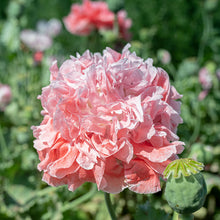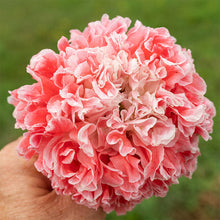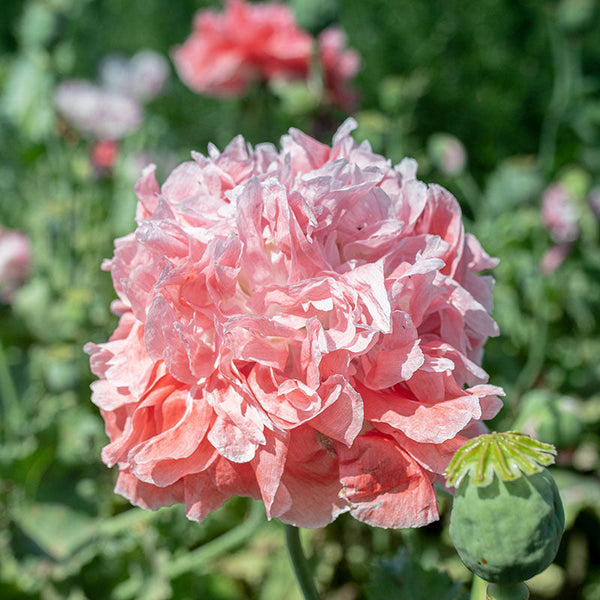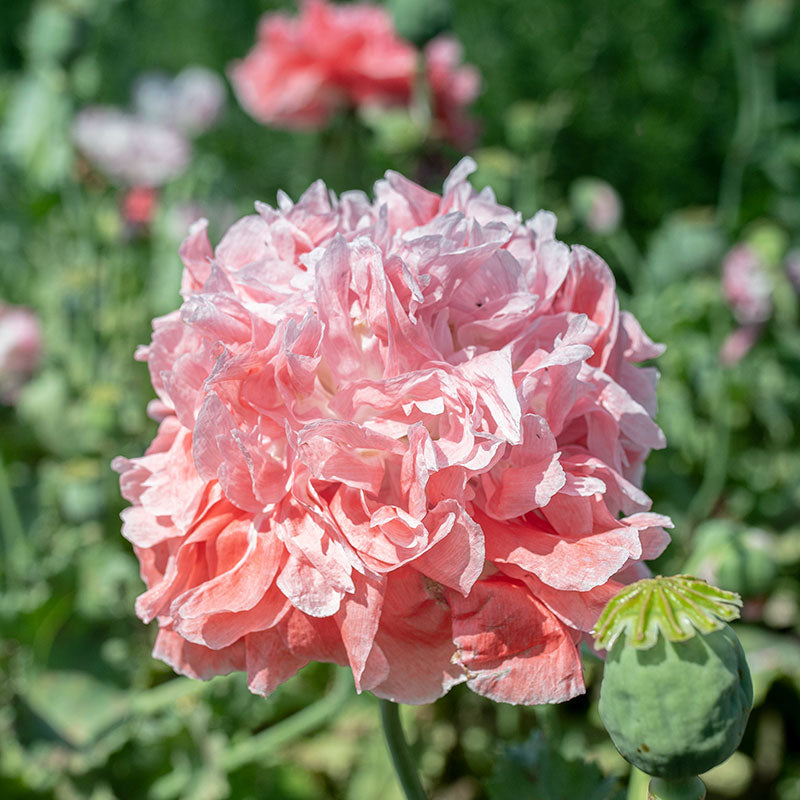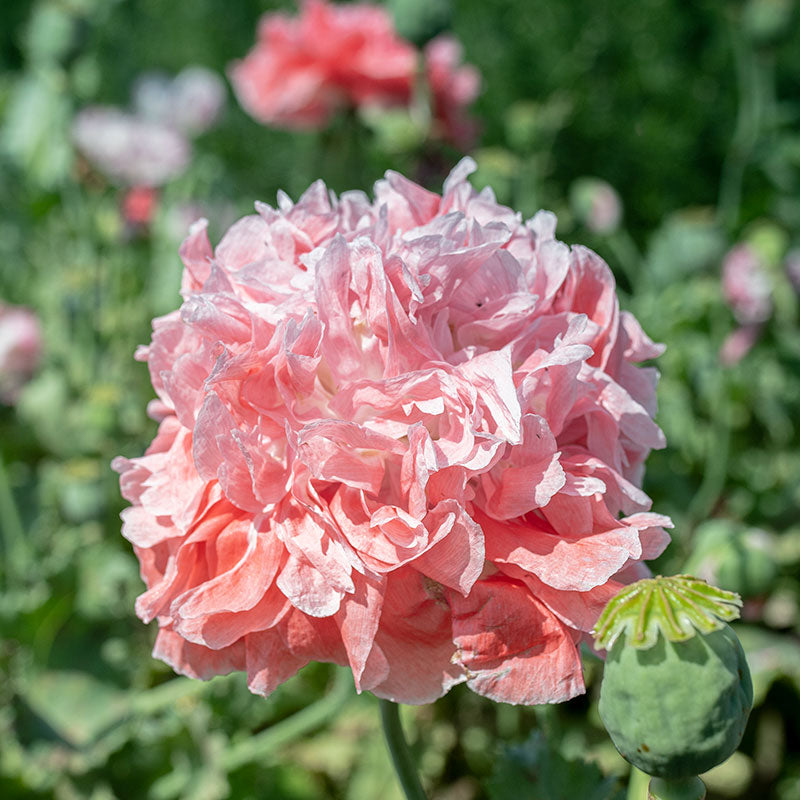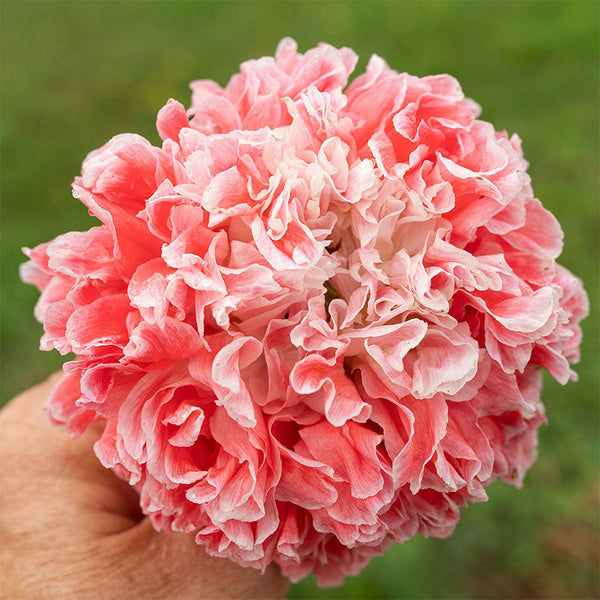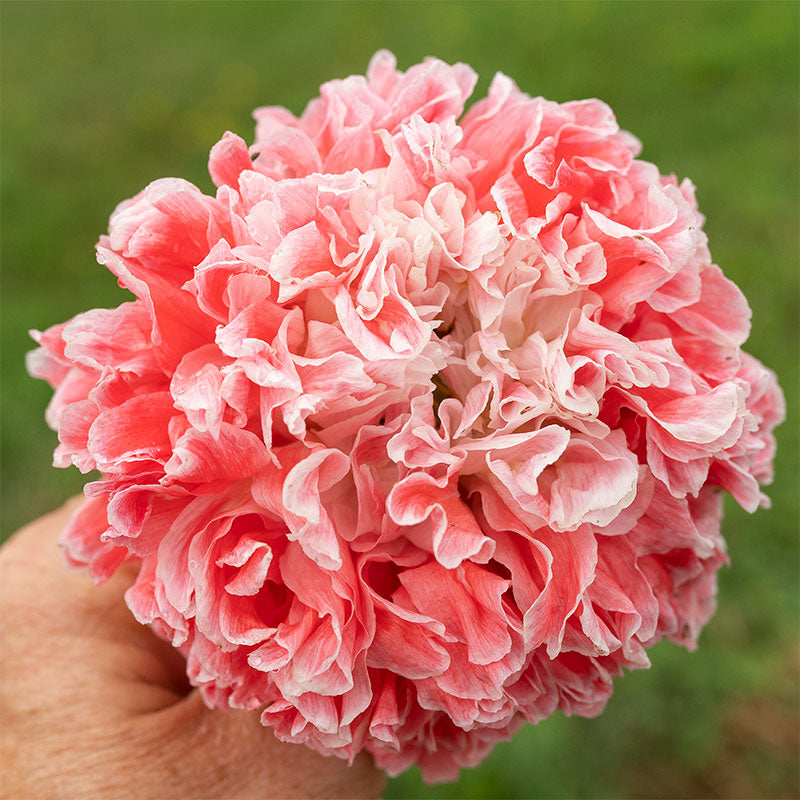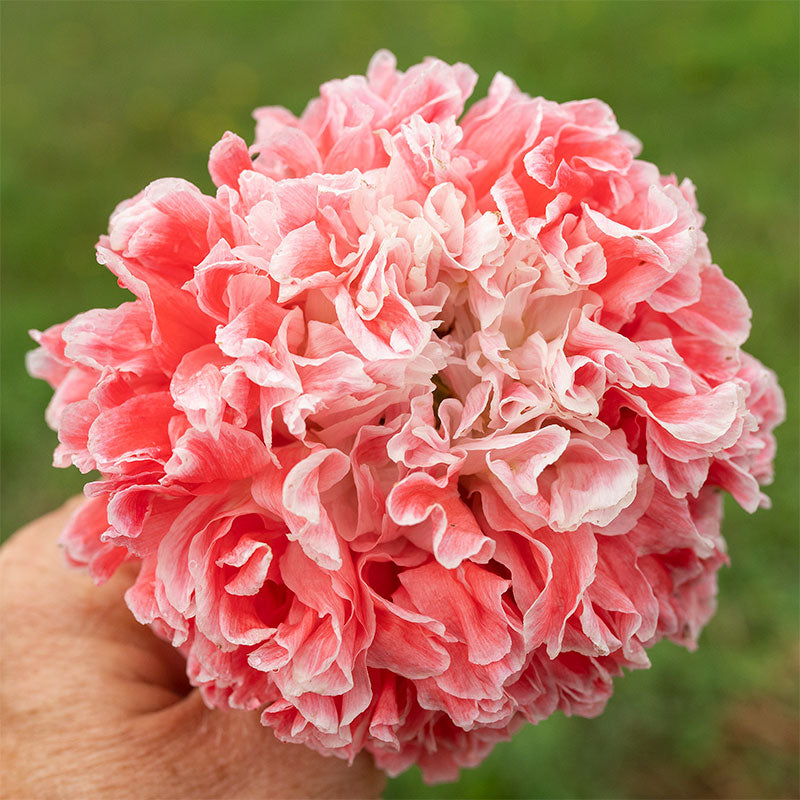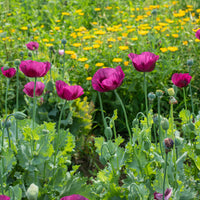SOWING INSTRUCTIONS
Depth:
Surface sow; requires light to germinate
Starting Indoors:
Sow in pots 6-8 weeks before last frost, cover lightly with vermiculite or a humidity dome and keep at 65-70°F until germination, then at 50-60°F. Be very gentle when transplanting, as poppies do not like to be disturbed.
Starting Outdoors:
Recommended. Direct sow 4 weeks before last spring frost or in late autumn (autumn only in zones 8+) Mix seed with fine sand and scatter thinly over prepared soil to avoid overcrowded seedlings.
WHEN TO SET OUTSIDE
At last spring frost date.
PLACEMENT & CULTIVATION
The voluptuous flowers of peony poppies are beautiful and blowsy early summer bloomers. Grow in their ancestral home, the cottage garden, where they should be staked early with an underpinning of twiggy brush or bamboo stakes to help hold up the heavy-headed flowers. Space well apart to allow the plants to develop strong bushy growth and after bloom, allow a few to self-sow. A cool-season flower.
Watering Details:
These plants prefer evenly moist soil, but can tolerate drought. About an inch of water per week is more than sufficient once they are established.
Soil pH:
Slightly acidic to neutral—if soil is acidic, add some lime before planting.
Fertilizer:
Mix in 2" inches of compost prior to planting.
Diseases & Pests:
Fungal diseases can be prevented by regularly spraying with organic fungicides and spacing at least 1' apart for good air circulation. If slugs and snails damage seedlings, sprinkle the surrounding soil with pelletized iron phosphate, crushed eggshells, or diatomaceous earth.
When to Cut for Bouquets:
Decorative dried seed pods.






























